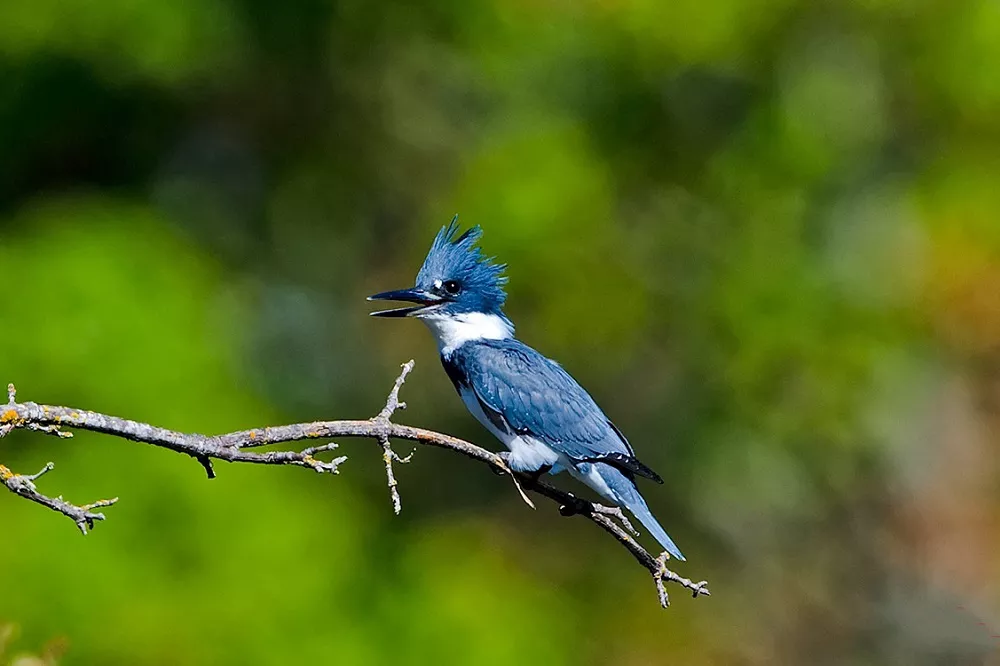The Belted Kingfisher (Megaceryle alcyon) is a fascinating avian predator renowned for its exceptional fishing skills. With its distinct physical adaptations and hunting techniques, the Belted Kingfisher has evolved to thrive in aquatic environments across North America. In this article, we explore the dietary habits and preferred prey of these remarkable birds, shedding light on their vital role in freshwater ecosystems.
Habitat and Diet
Belted Kingfishers are primarily fish-eaters, but they also consume a variety of other prey. They are known to feed on small mammals, insects, crustaceans, and even other birds. These birds use their keen eyesight to spot their prey from a distance. Once they have located their target, they will swoop down to catch it in their powerful beaks.
One of the primary habitats of Belted Kingfishers is freshwater areas such as rivers, streams, and ponds. They are also commonly found near saltwater areas such as estuaries and coastal regions. When hunting in these areas, they will perch on branches or rocks near the water’s edge, waiting for prey to come into view.
Fish: The Primary Prey
As previously mentioned, Fish constitute the primary component of a Belted Kingfisher’s diet. They possess remarkable adaptations that aid in their piscine pursuits. When hunting, these birds perch on branches or other elevated vantage points near water bodies, keenly scanning the surface for potential prey. Once a suitable target is spotted, the kingfisher dives into the water with precision, employing its strong wings to propel itself underwater. It then uses its sharp bill to snatch fish from beneath the water’s surface. Belted Kingfishers typically target small to medium-sized fish, such as minnows, shiners, perch, and sunfish.
Expanded Diet: Beyond Fish
While fish dominate their diet, Belted Kingfishers are opportunistic predators that readily exploit other available food sources:
Crustaceans: Kingfishers may also consume crustaceans, including crayfish, crabs, and shrimp, which inhabit the waters they frequent. These hard-shelled prey items provide a valuable alternative when fish are scarce or unavailable.
Amphibians and Reptiles: Depending on their habitat, Belted Kingfishers may opportunistically feed on amphibians, such as frogs and tadpoles, as well as small reptiles like lizards and snakes.
Insects and Invertebrates: Belted Kingfishers occasionally supplement their diet with insects, such as dragonflies, damselflies, and aquatic beetles. Additionally, they may target aquatic invertebrates, including aquatic worms, mollusks, and small crustaceans.
Small Mammals: Although less common, Belted Kingfishers have been known to capture small mammals, such as mice and voles, when presented with the opportunity.
Dietary Variation and Adaptability
The diet of Belted Kingfishers can vary depending on their location. In some areas, they may have access to a wider variety of fish species, leading to a more diverse diet. For example, Belted Kingfishers living near the coast may consume more saltwater species than those living inland. In other regions, availability of prey may also lead to variations in diet. This adaptability allows Belted Kingfishers to thrive in a variety of environments.
Ecological Significance
Belted Kingfishers play a vital role in freshwater ecosystems. As top predators, they help regulate the population sizes of their prey, preventing overpopulation and maintaining ecological balance. By targeting fish populations, they also indirectly contribute to the overall health and stability of aquatic ecosystems.
Conclusion
Belted Kingfishers are highly specialized avian predators, uniquely adapted for hunting in aquatic environments. Their diet primarily consists of fish, but they also exploit a wide range of other prey items, including crustaceans, amphibians, insects, and small mammals. Through their predatory habits, Belted Kingfishers contribute to the intricate web of life within freshwater ecosystems. Understanding and appreciating their dietary preferences not only enhances our knowledge of these remarkable birds but also underscores the importance of conserving their habitats for the benefit of both their populations and the ecosystems they inhabit.


 Facebook
Facebook  Instagram
Instagram  Youtube
Youtube 